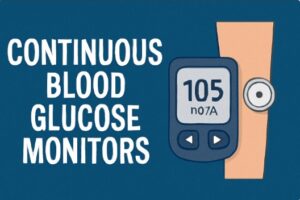Medical imaging has revolutionized diagnostics, offering precise insights into internal structures of the human body. Among the most advanced and commonly used techniques are CT scans vs MRIs, each with its distinct advantages. Understanding the differences between these modalities is essential for both patients and practitioners when choosing the appropriate diagnostic tools to examine medical case.
What Is a CT Scan?
A CT scan (Computed Tomography) uses X-rays and advanced computer algorithms to produce detailed cross-sectional images of the body. It is particularly useful for quickly examining people who may have internal injuries, and is widely used in emergency situations.
Key Features:
- Speed: Rapid image acquisition often completed in minutes.
- Best For: Bone fractures, detecting internal bleeding, tumors, lung imaging.
- Radiation: Involves exposure to ionizing radiation.
What Is an MRI?
Magnetic Resonance Imaging (MRI) employs strong magnetic fields and radio waves to generate high-resolution images of soft tissues. It is the preferred imaging method for neurological, musculoskeletal, and cardiovascular conditions.
Key Features:
- High Contrast: Excellent for soft tissues like brain, muscles, ligaments, spinal cord.
- Radiation-Free: No exposure to ionizing radiation.
- Longer Duration: Typically takes 30–60 minutes per session.
CT Scan vs MRI: Comprehensive Comparison
Imaging Speed and Emergency Use
In emergency settings, CT scans are often the first choice due to their speed and ability to detect acute injuries such as internal bleeding and fractures. MRIs, while more detailed, require more time and are less suitable in trauma cases requiring immediate results of a case.
Image Detail and Tissue Differentiation
When soft tissue contrast is critical, such as for detecting tumors in the brain or spinal cord, MRI provides superior detail. CT is more effective for visualizing bones, chest, and lungs.
Safety and Radiation Exposure
MRI scans do not use ionizing radiation, making them safer for repeated use and for vulnerable populations such as children and pregnant women. In contrast, CT scans involve a low dose of radiation, which is generally safe but accumulates with repeated exposure.
MRI vs X-Ray: When MRI Is a Better Choice
The MRI vs X-ray comparison often arises when soft tissue clarity is essential. While X-rays are excellent for evaluating bone fractures, they fall short in imaging muscles, ligaments, and cartilage. MRI excels in these areas, making it the preferred tool for diagnosing joint and spinal problems, brain disorders, and soft tissue tumors.
Diagnostic Applications: When to Choose CT or MRI
| Condition | Recommended Scan | Reason |
| Stroke (acute) | CT | Fast detection of hemorrhage |
| Brain tumor | MRI | Superior soft tissue contrast |
| Spinal cord injury | MRI | High-resolution soft tissue imaging |
| Lung or chest evaluation | CT | Clear images of lungs and chest cavity |
| Abdominal pain (acute) | CT | Quick, comprehensive view of organs |
| Joint or muscle tear | MRI | Detailed images of ligaments and soft tissues |
| Bone fracture | CT or X-ray | High-speed imaging and clear bone resolution |
Pros and Cons Overview
| Factor | CT Scan | MRI |
| Speed | Fast (minutes) | Slower (30–60 min) |
| Cost | Generally less expensive | More expensive |
| Radiation | Yes (ionizing) | No radiation |
| Best for | Bone, lung, trauma | Brain, spine, joints, soft tissues |
| Claustrophobia | Open machines available | Enclosed, can be distressing |
| Use with implants | Generally safe | Contraindicated in metal implants |
Technological Advancements in Imaging
Modern CT and MRI machines now integrate AI-based image reconstruction technologies, significantly reducing scan times, enhancing image resolution, and minimizing artifacts. These intelligent systems can optimize image quality in real time, adapt to patient movement, and even assist in early detection of subtle abnormalities. Functional MRI (fMRI), by measuring blood flow changes associated with neural activity, provides valuable insight into brain function, aiding in the diagnosis of neurological and psychiatric disorders. Similarly, Dual-Energy CT allows clinicians to differentiate tissue composition and identify conditions like gout or kidney stones with greater specificity. These advanced modalities are transforming diagnostic imaging from static visualization to dynamic, functional assessment bringing precision medicine closer to everyday clinical practice.
Choosing the Right Imaging Modality
When faced with the decision of CT scan vs MRI, the choice should be based on the clinical indication, urgency, anatomical focus, and safety considerations. Likewise, for MRI vs X-ray, the decision hinges on the tissue type and required image detail.
Consulting with a healthcare provider ensures the right imaging method is selected, maximizing diagnostic accuracy and minimizing risks.
Final Thoughts
CT scans and MRIs are not competing tools; they complement each other within the spectrum of diagnostic imaging. Each modality is uniquely equipped to address specific clinical questions: CT scans offer speed and precision in detecting acute conditions such as trauma, internal bleeding, and lung abnormalities, while MRIs provide unparalleled clarity in evaluating soft tissues, neurological structures, and musculoskeletal systems. Together, they form a cohesive diagnostic strategy, enabling physicians to deliver accurate, timely, and personalized care. The best diagnostic outcomes result from selecting the most appropriate tool for the clinical scenario, guided by evidence-based protocols, patient safety, urgency, and the specific anatomical focus.



